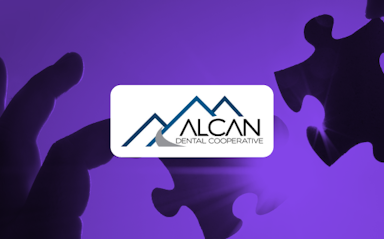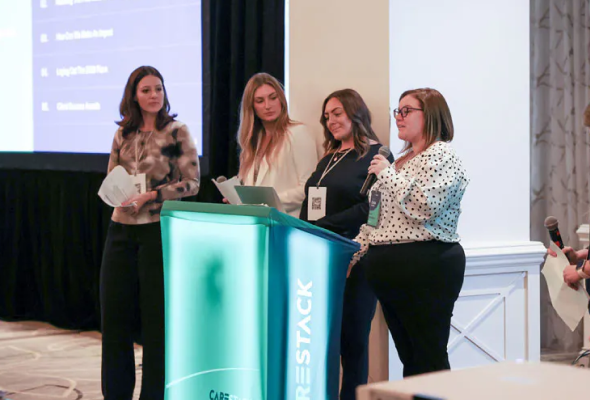How to Schedule Dental Appointments Effectively to Increase Revenue!
Dental scheduling is all about change. Your ability to anticipate, prevent, and react to change is often the game-changer in achieving desired scheduling outcomes and positive patient interactions.
Crafting your ideal dental appointment scheduling workflow is a skill that develops with experience (and often through trial and error). And while your process can be customized to meet your needs and goals, all workflows should emphasize productivity and patient care, ultimately facilitating revenue growth!
This article discusses the common scheduling challenges dental practices face and provides actionable insights into solving them. Let's dive in!
Contents
- Appointment Cancellations and No-shows
- Double Booking and Overbooking
- Inefficient Dental Scheduling Systems
- Managing Emergencies and Urgent Appointments
- Staff Scheduling and Time-Off Requests
DO YOU KNOW?
According to recent research, 52% of patients find online dental appointment scheduling time-saving.
1. Appointment Cancellations & No-Shows
Even with a perfectly balanced schedule, with everything looking great, unexpected cancellations or no-shows can knock you off your schedule. Reducing no-shows and cancellations is always easier said than done. However, careful planning and effective strategies minimize the effects of these incidents.
Clear communication with your patients is always beneficial. Make them feel heard and understood. Personalize the conversation to convey that you are as invested as them in their oral health. Explain the scheduled procedure's importance and provide rescheduling options when needed.
Set up automated reminders based on your patient’s preference (call, text, or email) in your dental appointment scheduling software, along with regular confirmation calls. These automated reminders will cover your bases even if the patient misses one of your attempts to get in touch.
Call patients who don't show up. You can’t control what happens in your patients' lives. However, make it a point to call them by phone if they don’t show up after 15 to 30 minutes of their scheduled appointment. This will give your closure, context, and a chance to reschedule.
Here’s an example of the follow-up call you can have with your patients:
Hey , It’s <clinic name>. I see you haven’t come in yet for your appointment scheduled at <time> today. I just wanted to check-in in case you were running late. We can schedule the appointment at a more convenient time if you can’t make it today. Missing your follow-up appointment would set your dental plan back since <the reason the appointment was important>. I can set you up for the next available session, which will be on <day and time>.
DO YOU KNOW?
Nearly 4-in-10 of the 50-plus age group prefer text messages for communication with their practice.
2. Double-Booking & Overbooking
Double-booking and overbooking can sometimes be both a challenge and a solution to scheduling problems. Let’s see how to schedule dental appointments effectively to tackle this challenge.
Double booking happens when the practice schedules two patients for the same time slot, assuming one will cancel or reschedule. This strategy is often used when a practice has a high rate of cancellations and no-shows. By scheduling two patients simultaneously, the practice will still have a patient to fill up the slot, even if the other cancels or fails to show up.
Overbooking involves intentionally booking more patients than the available appointment slots. For example, if a practice has five appointment slots available in a day, they may schedule six or seven patients with the expectation that some will cancel or reschedule. This strategy is risky as patients will likely have to wait longer or be turned away if everyone on the list shows up.
Block scheduling is an effective way to reduce double booking and overbooking. With block scheduling, certain time blocks are assigned to specific procedures, ensuring adequate time for each procedure without being rushed. (For example, if a dental practice sets aside time for routine cleanings, they will only schedule such patients during that block.)
This will ensure that the dental hygienist gets enough time for cleaning and that the dentist has adequate time to review the patient's dental health and recommend the necessary treatment plan.
You can use dental scheduling software that streamlines and creates a scheduling system to curb confusion due to double-booking and overbooking.
CareStack, an all-in-one cloud-based practice management software, has an easy-to-use scheduler that allows practices to integrate the booking link into their existing website to facilitate easy online scheduling.
3. Inefficient Dental Scheduling Systems
Sometimes, it’s the online dental appointment system itself that poses a challenge. An inefficient scheduling system can significantly impact your dental practice's operations, thus reducing productivity, and increasing wait times, lost revenue, and negative patient experiences. Here are some tips:
Continuously monitor for inefficiencies Recognize when gaps in your schedule appear, and analyze appointment results to identify patterns. Trust the data and your intuition, and adjust the scheduling process accordingly.
Identify the most productive procedures at your practice and the easiest time slots to fill. Once that is done, block the most productive procedures during your most efficient time to ensure the utmost quality and care. So now you have your staff at maximum productivity during peak hours.
Consider choosing a dental scheduling software that manages your schedules and streamlines the appointment booking process.
4. Managing Emergencies & Urgent Appointments
Dental emergencies present additional challenges that might disrupt your perfectly balanced schedule.
Accommodating emergencies requires extra pre-planning to ensure patients receive timely care without sacrificing quality. On the other hand, failing to manage emergencies leaves patients dissatisfied and team members stressed. It might also negatively impact your practice’s reputation and undermine patient trust.
Here's how to prepare for dental emergencies:

Prioritization and triage: Create a system to prioritize and triage emergencies and urgent appointments. Patients with severe conditions should receive immediate attention, while less critical situations can be scheduled for later.
Clear communication protocols: Give your patients clear instructions on what to do in case of a dental emergency, and train your staff to handle such situations. Effective protocols should follow predefined guidelines that significantly improve the chances of complete recovery.
Backup plans and contingencies: By definition, emergencies are always unexpected, so practices should have backup plans and contingencies to manage these situations. These measures may include having extra team members on call, reserving time slots for emergency cases, or having arrangements with nearby emergency dental services.
5. Team Member Scheduling & Time-off Requests
Team member scheduling issues can also cause problems that result in understaffing and conflicts. This cascade effect leads to decreased productivity and increased labor costs.
Additionally, poorly managed time-off requests and unexpected absences can exacerbate the issue, impacting workplace morale and the ability to provide excellent patient care. So how do you mitigate these occurrences?
Create clear scheduling policies to provide guidelines and expectations regarding employee attendance and requests.
Educate team members on the purpose of your scheduling policies, and keep them up-to-date on any policy changes.
Communicate and collaborate with team members to resolve scheduling conflicts in an equitable way.
CareStack Case Study
Modern practice management software solves most scheduling challenges dental practices face. CareStack, an all-in-one dental practice management software, has helped many practices streamline online appointments and build a solid system that maximizes revenue.
D. Brian Williams, DDS, owns a multi-location practice in Charlotte, North Carolina. They have previously used multiple software to manage different aspects of the practice. However, with the expansion of services, managing and integrating all of these pieces proved to be a challenge on its own.
CareStack's multi-site scheduler helped them schedule appointments for all locations, providers, and specialties from a single window streamlining the process.
"What appealed to us first about CareStack was the ease of use and streamlined workflow housed under one single database. The scheduler feature in CareStack allows us to work appointments and providers in between operatories with ease, making our lives so much easier." – Tyler Phillips, Practice Manager, D. Brian Williams D.D.S
Read the Full Story - Click here
Conclusion
An ideal scheduling workflow requires a collective effort from your whole team. And, as the saying goes, practice makes perfect—it isn't something that happens overnight! Identifying the situation and implementing the discussed strategies will help practices implement a scheduling system that can adapt to any circumstance. And, with robust dental software solutions and the willingness to make it work, you have all the tools needed for a highly productive practice!
To learn more about Carestack Scheduler, Click here




